Granite or Quartz Countertops | What IS the difference?

by Alison Norris | Designer B&T Kitchens and Baths
When granite countertops took the kitchen and bath industry by storm in the late 1990’s, no one knew that only a few years later, another material would quickly gain popularity. This material is a man-made material called Quartz (also known as “engineered quartz”). While granite still remains popular among residential homeowners, professional kitchen designers often lean towards quartz as the preferred countertop material for their clients. Granite is an extremely hard, beautiful natural stone. So why consider quartz?
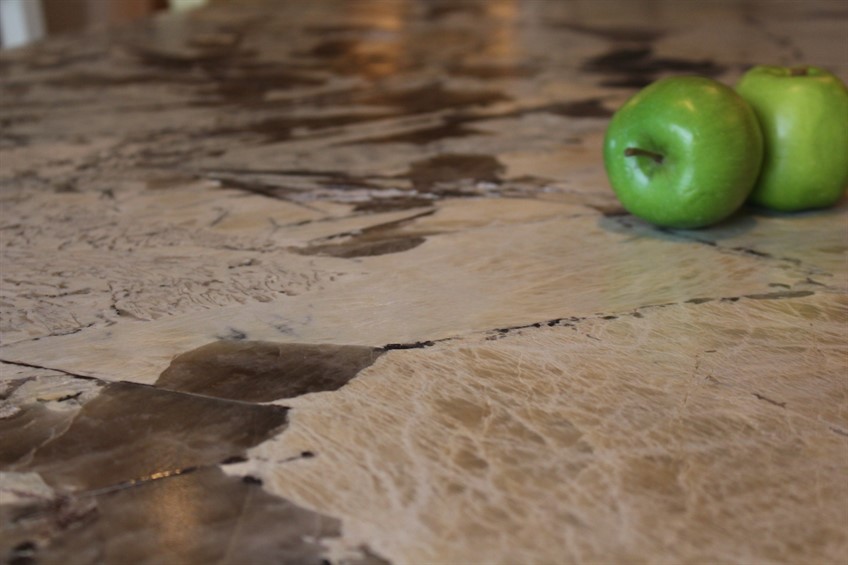
Image Above - Granite - "Vintage White"
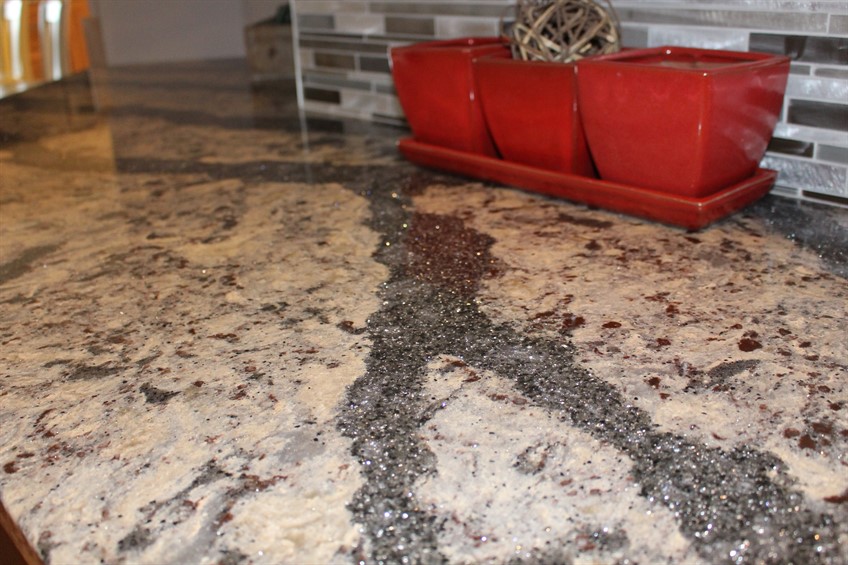
Engineered quartz is made of 90-92% ground up quartz and 10-8% resin, pigments, and polymer. This next statement may sound confusing. However, natural quartz is found in granite stone. It is a clear mineral formed from crystallized magma. When quartz is ground up and mixed with the resin (polymer and pigments), a denser, harder product is formed. This process allows the finished, engineered quartz countertop to be virtually resistant to scratches, heat, and stains. On the contrary, granite has tiny capillaries that cause it to be more porous. The more porous the material, the more likely the material will need to be sealed. Another problem with granite being porous is that it can hold onto bacteria. The bacteria can easily absorb into the capillaries of the stone, making it harder to keep clean. With engineered quartz countertops, the bacteria stays on the surface and can easily be wiped off with cleaning products. The capillaries in the granite also make it more likely to absorb stains, while quartz is resistant to them.
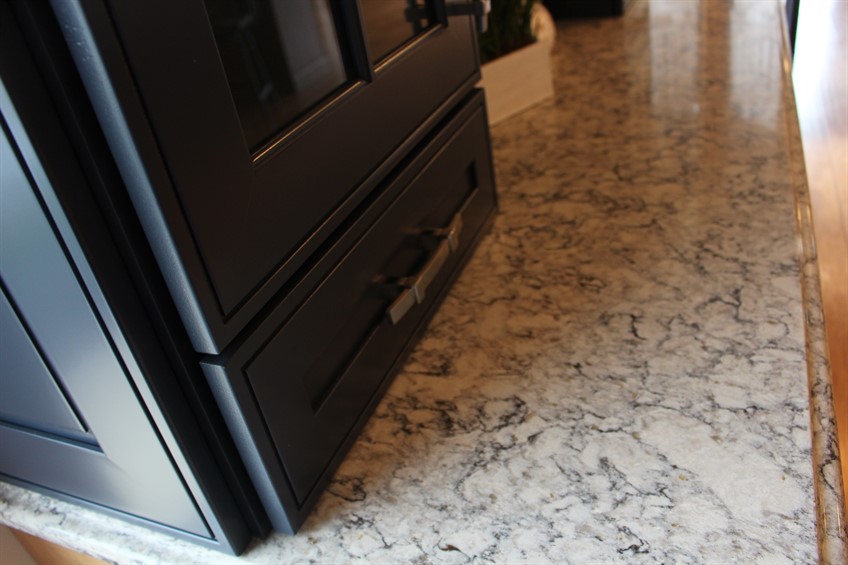
Image is LG Quartz "Intermezzo"
Regarding aesthetics, beauty is in the eyes of the beholder. Many people differ in opinion about which material proves to be more aesthetically pleasing. When it comes to appearance, what it comes down to, is whether the homeowner wants the countertop to be the focal point or not. Granite is going to have a more random pattern evoking movement. Engineered quartz, has a controlled appearance giving it more consistency. One might use quartz, to let another element in the kitchen be the focal point, allowing the countertop to fade into the background. Granite is often used to create a “wow” factor or used as a conversation piece. Let’s face it, the natural granite from a quarry in Brazil has a better story than the engineered quartz made in a factory.
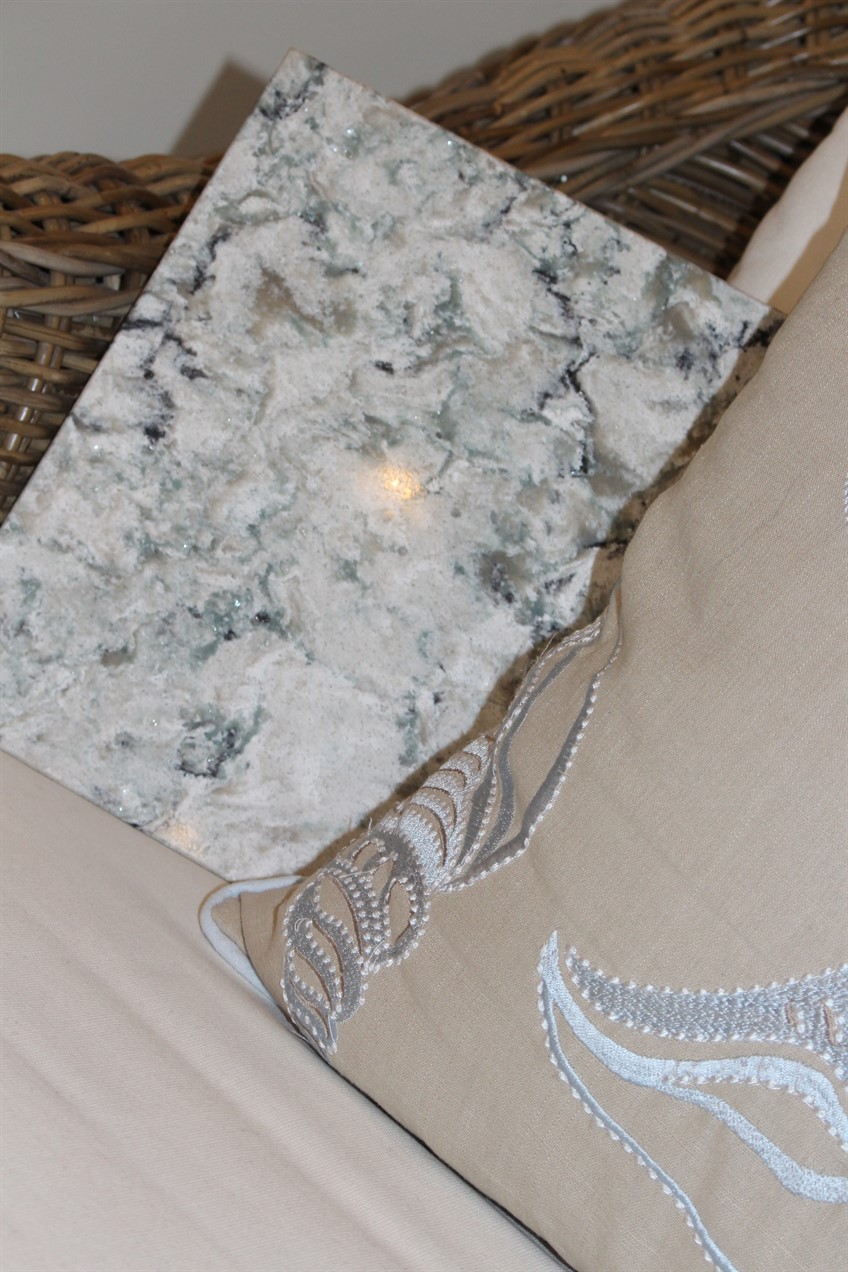
Image above - Cambria ( Quartz) "Praa Sands"
One of the biggest deciding factors for homeowners between granite and quartz countertops is cost. Historically, quartz was the pricier option between the two when comparing a standard granite color to a mainstream quartz. In recent years, quartz prices have dropped because more companies are manufacturing the product creating more competitiveness among large-scale quartz companies. Standard granite colors still may be cheaper than quartz, but granite prices are all over the board depending on availability. If a quarry runs out of a specific granite, the price of that particular granite is going to spike. Whereas with quartz, the product can always be made if the desired product’s availability is low.
As a kitchen designer, I have found that my happiest clients typically purchase quartz. With quartz, the client knows what they are getting, and there are no surprises in the pattern. In the end, it is all about what is the best value for my clients. I know that in years to come, my clients will not have problems with the durability of their quartz countertops and are less likely to get tired of looking at a more continuous pattern compared to granite’s imperfections.
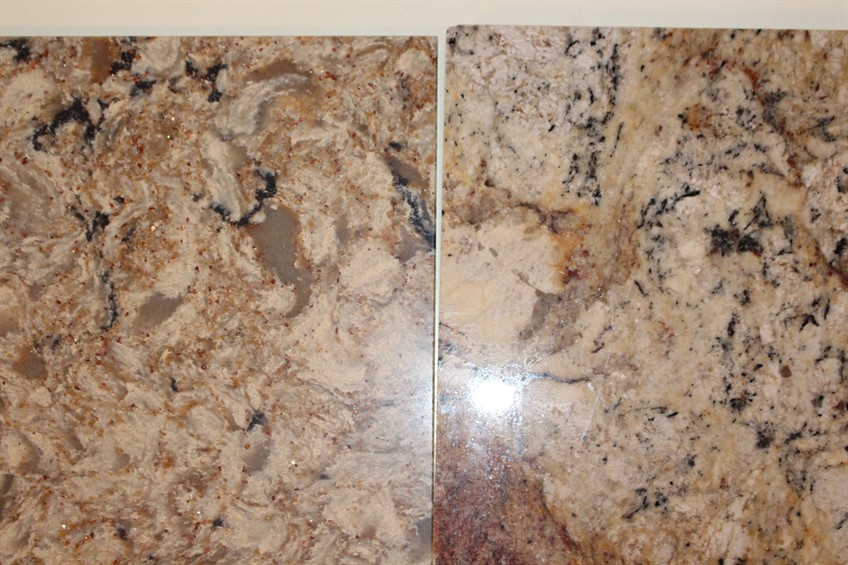
left side - Cambria (Quartz) "Bradshaw" | right side - Granite - "Typhoon Bordeaux"
Filed Under: Kitchen Design